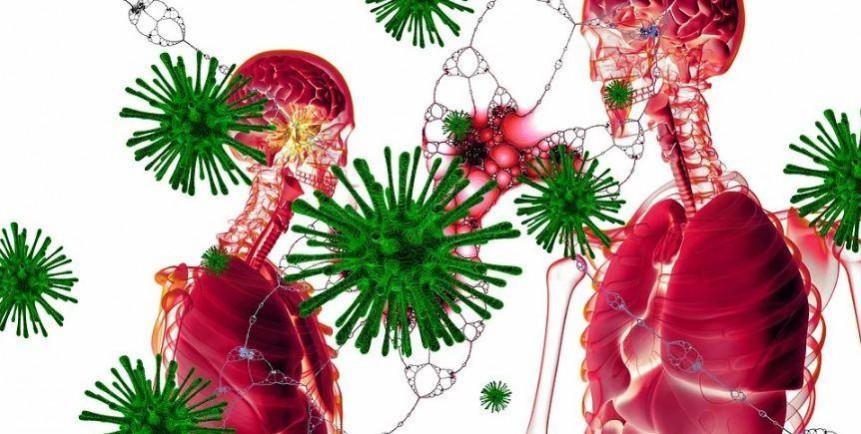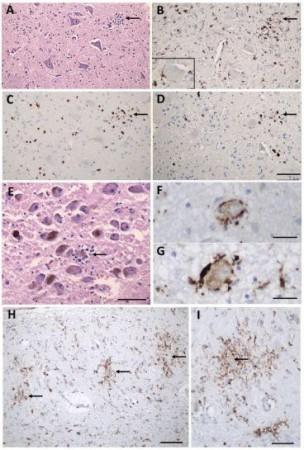Though the SARS-CoV-2 virus' primary target is said to be the respiratory system, the damage caused by the pathogen has not spared the other organs of the body. Now, a new study by researchers from Columbia University Irving Medical Center has reported that while the coronavirus does not infect the brain directly, it can still inflict considerable neurological damage.
According to the paper, which is the largest published report detailing COVID-19 brain autopsies involving over 40 patients, there were no signs of the virus in the brain cells of the afflicted. However, it is likely that the inflammation triggered by the virus in the brain's blood vessels or other parts of the body, can cause neurological changes in the brain.
"At the same time, we observed many pathological changes in these brains, which could explain why severely ill patients experience confusion and delirium and other serious neurological effects--and why those with mild cases may experience 'brain fog' for weeks and months," said Dr. James E. Goldman, co-lead author of the study, in a statement.
Autopsy of the Brain

For the study, the brains of 41 patients who had lost their lives to COVID-19 while hospitalized were examined by the authors. The patients were between the ages of 38 to 97. Of these, nearly half had received intubation. All their lungs had suffered damage by the virus. The duration of hospitalization was varied among these patients. While some succumbed shortly after being brought to the emergency room, others stayed in the hospital for a few months.
Exhaustive laboratory and clinical investigations had been carried out on all the patients, with some undergoing CT and MRI scans. Interestingly, several of the patients were of Hispanic ethnicity. In order to identify, the presence of the virus in the glia cells and neurons of the brain, the team utilized several methods. These included RT-PCR (a technique to detect viral RNA), RNA in situ hybridization (a method to detect viral RNA inside intact cells), and antibodies test (for the detection of viral proteins within cells).
No Evidence of Virus in the Brain
In spite of conducting extensive examinations, no proof of the virus' presence in the brain cells of the patients was found. While RT-PCR tests detected trace levels of the coronavirus' RNA, it can potentially be attributed to the virus present in the leptomeninges (two innermost layers of tissue covering the spinal cord and the brain) or the blood vessels surrounding the brain.

Talking about the comprehensive nature of the current study, Dr. Goldman noted, "Though there are some papers that claim to have found virus in neurons or glia, we think that those result from contamination, and any virus in the brain is contained within the brain's blood vessels."
Dr. Peter D. Canoll, co-lead author of the study, emphasized that the low amounts of the virus within the brain is not correlated to the abundance or distribution of neuropathological observations. The team conducted tests on over two dozen regions of the brain including the all-important olfactory bulb.

These areas were investigated based on speculations in other studies that the virus may the brain from the nasal cavity using the olfactory nerve. "Even there, we didn't find any viral protein or RNA. Though we found viral RNA, and protein in the patients' nasal mucosa and in the olfactory mucosa high in the nasal cavity," noted Dr. Goldman.
Oxygen-deprived Damage
The brain pathology among the examined patients was distributed into two categories. The first group was those whose brains had suffered damage due to lack of oxygen or Hypoxic damage. "They all had severe lung disease, so it's not surprising that there's hypoxic damage in the brain," explained Dr. Goldman.

In some of the cases the damage—that was caused by strokes—spanned large areas. Most of the damaged areas, however, were very little and were detectable only under a microscope. Comparing it with other features, the researchers suggested hypoxic damage causes to these small areas were brought on blood clots that caused a temporary stoppage of oxygen supply to the said areas.
Indications of neural death
The second group of patients comprised of those who showed signs of damage to the neurons. Making an unexpected discovery, the researchers found that a large number of microglia had been activated in their brains, and attacked neurons through a process known as neuronophagia.

Microglia are immune cells found in the brain that are activated by pathogens. The activated microglia were mostly found in the lower brain stem (associated with heartbeat and consciousness), and hippocampus (involved in mood and memory).
Now, the team is conducting autopsies on COVID-19 survivors who died several months after making a recovery. "We know the microglia activity will lead to loss of neurons, and that loss is permanent. Is there enough loss of neurons in the hippocampus to cause memory problems? Or in other parts of the brain that help direct our attention? It's possible, but we really don't know at this point," concluded Dr. Goldman.











